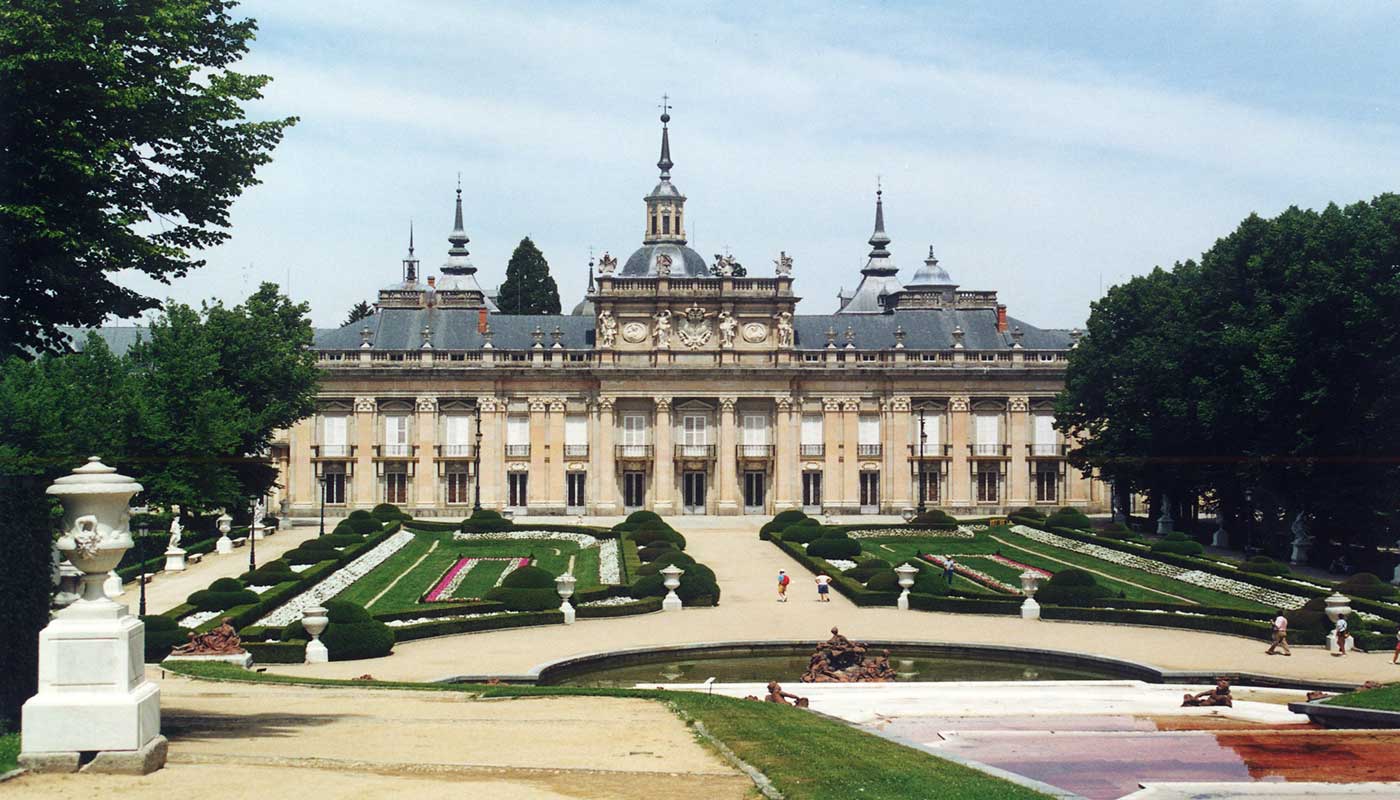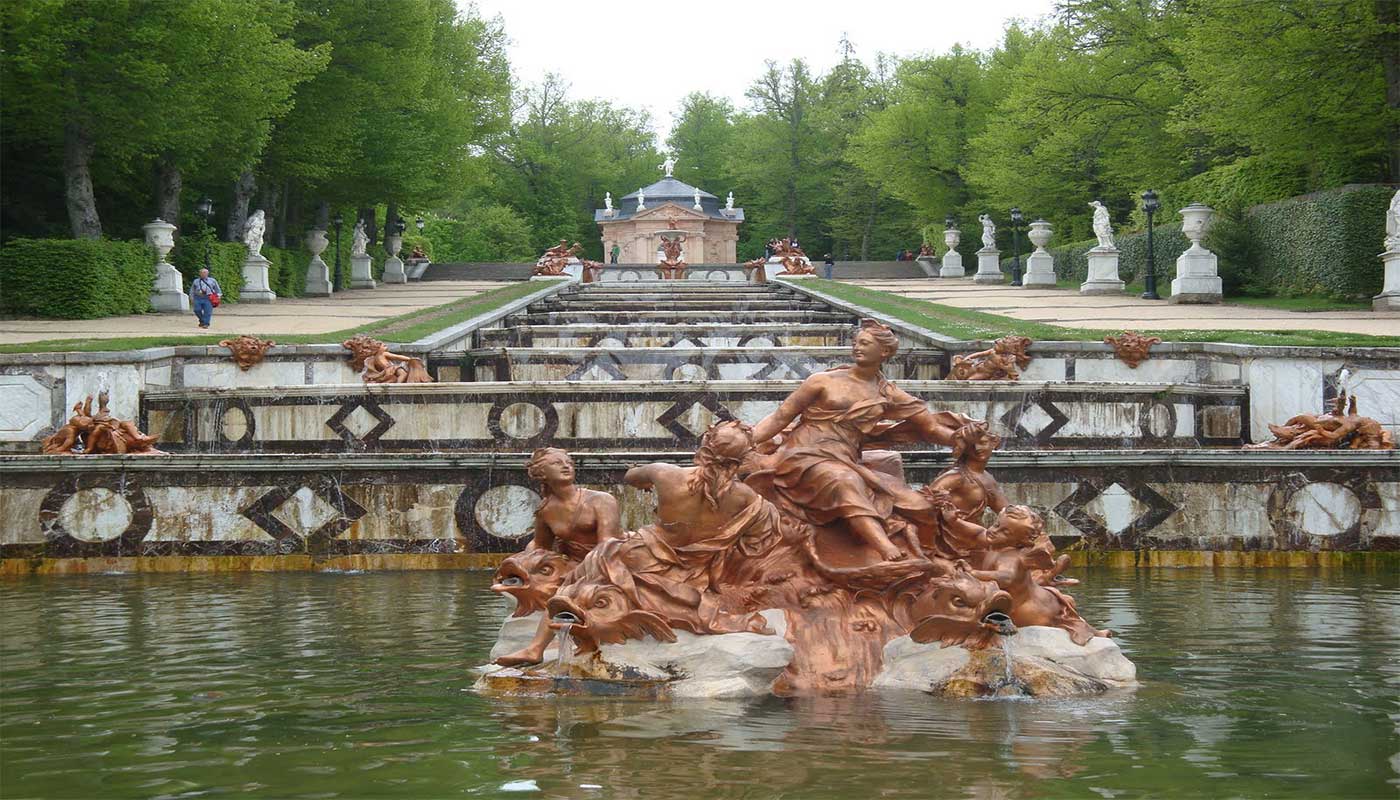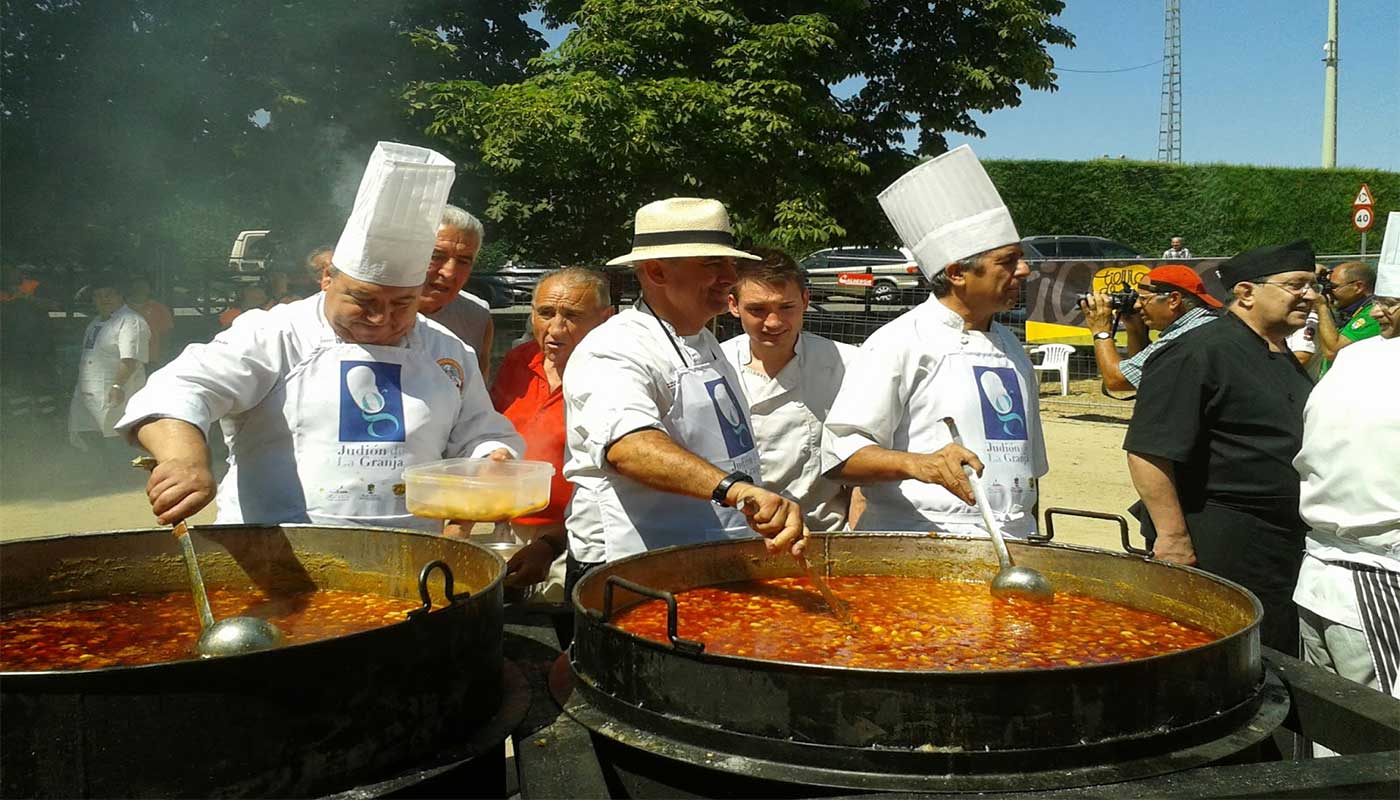Segovia – La Granja

During the festivities of San Luis, ¨La Judiada¨ is performed. Which consists of a preparation of a massive stew.
La Granja – Segovia
The first reference that appears to La Granja-Valsaín is related to the Kings of Castile. To Henry IV (1450) and his love for hunting is due the first construction of what would become temporary headquarters of the Spanish court.
Until 1571 the Palace of Valsaín lived his best moments. In 1566, was born in this place, Isabel Clara Eugenia, daughter of Philip II, she received from her father the sovereignty of the Netherlands, reigning in them until 1663.
In 1570, were held in this palace the celebrations of the fourth marriage of Philip II. In April 1697, reigning Carlos II, a raging fire destroyed part of the palace. Later Felipe V, Duke of Anjou, decides to build a new residence. The construction of the new palace and gardens took place between 1720-1723. In 1734 the king retired to the palace, which was used as a summer residence for all successors until Alfonso XIII.
The Royal Gardens
With an area of four miles, the gardens surrounding the palace and are one of the best examples of garden design in eighteenth century Europe.
They were designed by the French gardener René Carlier, who used the natural slopes of the hills surrounding the palace as an aid to the visual perspective and as a source of energy to bring forth water from each of the twenty monumental fountains that decorate the park.
The fountains are inspired by classical mythology, including gods, allegories and mythological scenes. Currently, only a few are put into operation each day.
But three times a year to coincide with the feast of San Fernando (May 30), Santiago (July 25) and San Luis (August 25), all fountains are activated, showing an admirable spectacle that brings together thousands of people annually.
Traditions
The typical product of La Granja is the Judión (variety of large white beans) grown in the orchards of the region. During the festivities of San Luis, ¨La Judiada¨ is performed. Which consists of a preparation of a massive stew with this product.
It is also typical of the municipality, the Valsain cake, which is a sponge -like mass, but more flattened, stuffed with anise in grain and sugar coated.
To book this tour please contact us through our contact form or making click in the below green button. We will be in touch with you shortly and will provide you with price and details.
Are you in a tour mood?



